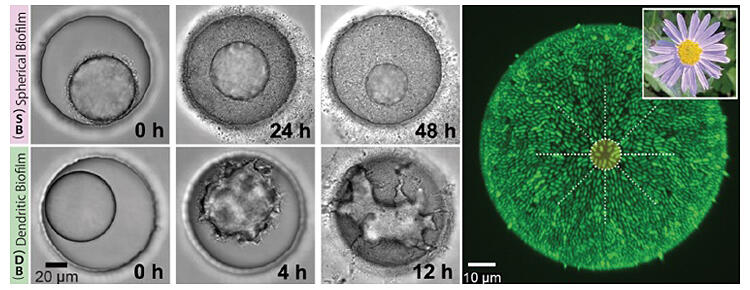Many ocean bacteria form into communities called 'biofilms.' When an oil spill occurs in the ocean, certain marine bacteria are known to biodegrade oil as a source of nutrients and form a biofilm around the spill. However, the role that biofilms play during oil degradation remained unclear.
A research group led by Associate Professor Andrew S. Utada of the Institute of Life and Environmental Sciences at the University of Tsukuba visualized the interaction between oil-degrading bacteria and minute oil droplets at high-resolution. From this, they clarified the mechanism by which these bacteria quickly break down oil. To achieve this, they used a 'microfluidic device.' With this device, it is possible to hold oil droplets less than 0.1 mm in size and continue to observe the behavior of bacteria for more than a week. Based on their observation, they confirmed that the marine bacterium Alcanivorax borkumensis formed two types of biofilms on oil droplets and named them a 'spherical biofilm' (SB) and a 'dendritic biofilm' (DB).
The oil droplets cultured with the microfluidic device maintained a spherical structure in artificial seawater, and this shape did not change even after a SB formed at the interface. However, when DBs formed at the interface, the oil droplets changed into a tubular dendritic shape. The interfacial area then rapidly expanded, allowing more bacteria to come into contact with oil. Although SBs consumed more than 90% of their oil droplet volume in about 72 hours (h), DBs achieved the same level of consumption in about 20 h.
The study findings demonstrated that the bacteria efficiently utilized oil as food. Such a mechanism can be applied to the study of similar organisms and contribute to increasing bioremediation efficiency through the use of microorganisms to remove environmental pollutants.

Journal Information
Publication: Science
Title: Alcanivorax borkumensis biofilms enhance oil degradation by interfacial tubulation
DOI: 10.1126/science.adf3345




